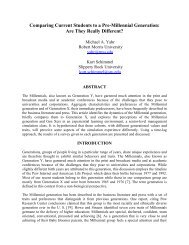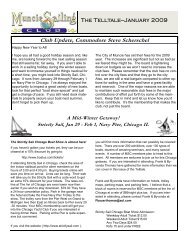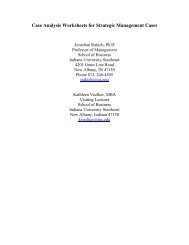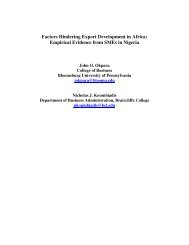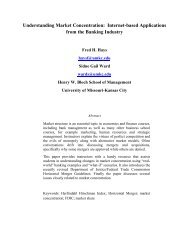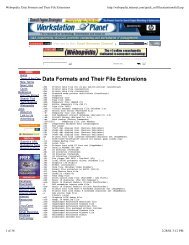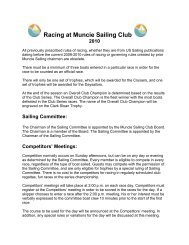Active versus Passive Management of International Mutual Funds ...
Active versus Passive Management of International Mutual Funds ...
Active versus Passive Management of International Mutual Funds ...
Create successful ePaper yourself
Turn your PDF publications into a flip-book with our unique Google optimized e-Paper software.
Markets. The comparison indices included: Morgan Stanley Capital Index World; Morgan<br />
Stanley Capital Index Europe; Australia and Far East; Morgan Stanley Capital Index Europe;<br />
Morgan Stanley Capital Index Pacific; and Morgan Stanley Capital Index Emerging Markets<br />
<strong>Funds</strong>. The period <strong>of</strong> the study was from 1976 to 2000. The results <strong>of</strong> the study showed that there<br />
is an advantage for active fund managers in the international mutual fund category as they<br />
outperformed the passive indexes in three <strong>of</strong> five categories [37]. The study documented the<br />
need for active management in the international sector.<br />
Blitzer [13] thought that statistical papers will continue to grow in popularity as new<br />
thoughts are developed on beating the index. The behavioral nature <strong>of</strong> investors makes this a<br />
reality.<br />
Fundamental indexing<br />
Arnott, Hsu, and Moore [6] started the newest revelation in financial engineering with the<br />
concept <strong>of</strong> fundamental indexing. They acknowledged that cap-weighted portfolios and indexes<br />
have advantages. Capitalization weighting is a passive strategy requiring little trading, therefore,<br />
transaction costs are low. A cap-weighted index provides an easy way to participate in a broad<br />
equity market, and cap-weighting is highly correlated with liquidity therefore; heavily traded<br />
stocks are emphasized. Considering these advantages, any alternative to indexing should strive to<br />
include these fundamentals. To this end, they based their concept <strong>of</strong> fundamental indexing on<br />
these advantages with an annual portfolio rebalancing [6].<br />
To create the fundamental index companies were ranked by book value, trailing 5-year<br />
average cash flow, trailing 5-year average revenue, trailing 5-year average gross sales, trailing 5-<br />
year average gross dividends and total employment. The 1000 largest were then selected by each<br />
metric and included in the index. The financial statement data were obtained from<br />
CRSP/Compustat database. The portfolio was rebalanced once a year on the last trading day [6].<br />
The results <strong>of</strong> the study showed the portfolios outperformed the S&P 500 by an average<br />
<strong>of</strong> 1.97 percentage points a year during the 43-year period. The results were considered robust<br />
since varying economic conditions were included in the period. The excess returns over the S&P<br />
500 were from superior market portfolio construction, price inefficiency, and additional exposure<br />
to distress risk, or a combination <strong>of</strong> the three [6].<br />
Brinson [21] supported the fact that bubbles have existed in the financial markets for<br />
centuries and will continue to exist in the future. He believed that value can be added by active<br />
management strategies during very long time periods, which allow the active manager to capture<br />
the anomalies as they occur in the economic cycles during short-term intervals. He further stated<br />
the investment managers should move away from using past performance for anything but<br />
accounting value. The market is efficient in the long term, but potentially inefficient in short<br />
intervals [21].<br />
Treynor [82] supported the work <strong>of</strong> Arnott, Hsu, and Moore [6] and postulated why<br />
fundamental indexing provided added value. Market Valuation Indifferent Indexing avoids the<br />
cap-weighted indexing problem by linking the covariances <strong>of</strong> the portfolio weights with market<br />
price per share, true value per share and errors in market price per share. He believed that all<br />
stocks have random pricing errors. Therefore, by randomly investing one can take advantage <strong>of</strong><br />
the market’s pricing errors [82].<br />
Asness [10] continued the support for passive indexing with caveats. He believed an<br />
investor cannot use long term historical stock trends to determine the expected stock return. The<br />
fact that the stock market has not lost over time does not mean it will not lose in the future.<br />
Investors must realize they cannot all be in the market at the same time as a dollar invested<br />
14



